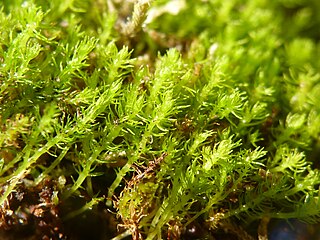
Takakia is a genus of two species of mosses known from western North America and central and eastern Asia. The genus is placed as a separate family, order and class among the mosses. It has had a history of uncertain placement, but the discovery of sporophytes clearly of the moss-type firmly supports placement with the mosses.
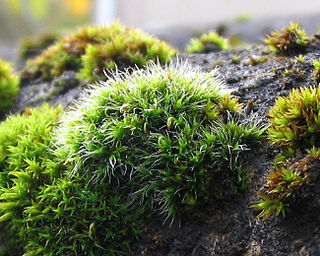
Grimmiales is an order of mosses in the subclass Dicranidae. It comprises four families: Grimmiaceae, Ptychomitriaceae, Seligeriaceae, and Saelaniaceae.

Pottiales is an order of mosses in the subclass Dicranidae.
Neckeropsis is a genus of plant in the family Neckeraceae.
Andreaeobryum, the Mossy Cowl Moss, is a genus of moss with a single species Andreaeobryum macrosporum, endemic to Alaska and western Canada. The genus is placed as a separate family, order and class among the mosses.
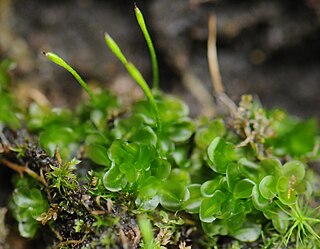
Oedipodium is the only genus of moss in the family Oedipodiaceae. It contains the single species Oedipodium griffithianum, the gouty-moss or Griffith's oedipodium moss. This species is distributed in cooler climates of Eurasia, as well as from Alaska, Washington state, British Columbia, Yukon, Greenland, Newfoundland, Tierra del Fuego and the Falkland Islands.

Timmia is a genus of moss. It is the only genus in the family Timmiaceae and order Timmiales. The genus is named in honor of the 18th-century German botanist Joachim Christian Timm.
Neosharpiella is a genus of moss containing two species in the family Bartramiaceae. The type species, Neosharpiella aztecorum, grows in alpine regions of central Mexico, while the other species, Neosharpiella turgida, has been found in Bolivia and Ecuador.
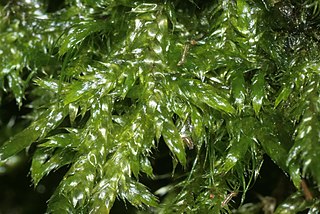
Sematophyllaceae is a family of mosses, known commonly as signal mosses. They grow on rocks in wet or humid places. and are found nearly worldwide, especially in tropical and temperate regions. There are about 150 species, which form yellow to yellow-green mats with reddish stems.
Daltoniaceae is a family of moss in the order Hookeriales.
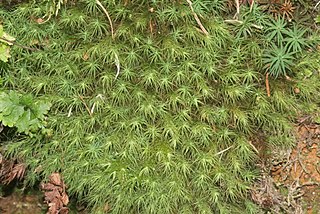
Bartramiales is an order of moss.

Mniaceae is a moss family in the order Bryales.
Ptychomitriaceae is a family of mosses in the subclass Dicranidae.
Drummondia is a genus of haplolepideous mosses (Dicranidae) in the monotypic family Drummondiaceae.

Rhabdoweisiaceae is a family of haplolepideous mosses (Dicranidae) in the order Dicranales. It consists of 16 genera.

Ditrichaceae is a family of haplolepideous mosses (Dicranidae) in the order Dicranales.
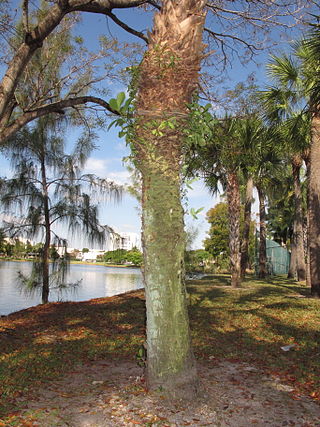
Octoblepharum is a genus of haplolepideous mosses (Dicranidae) in the monotypic family Octoblepharaceae . The genus Octoblepharum was previously placed in family Calymperaceae.
Saelania is a genus of mosses in the monotypic family Saelaniaceae in subclass Dicranidae. The genus was previously placed in family Ditrichaceae. Saelania is named after Finnish botanist Thiodolf Saelan.
Helodium is a genus of mosses belonging to the family Helodiaceae.
William Russel Buck is an American bryologist.










